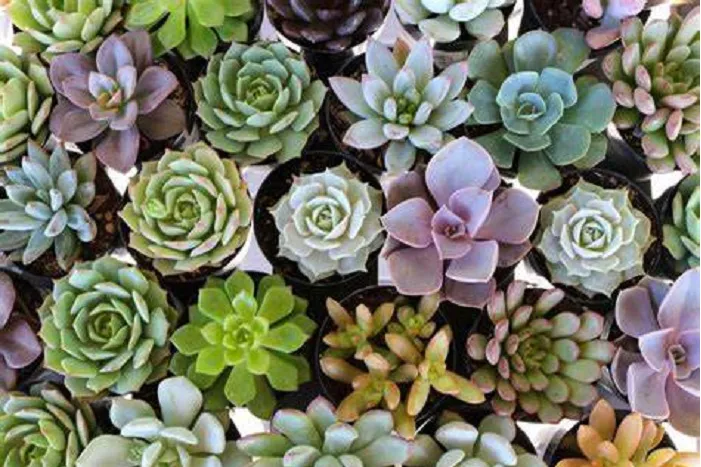Succulents are beloved for their unique shapes, vibrant colors, and low-maintenance nature. But how can you tell if your succulent is truly healthy? This guide will walk you through the key signs of a thriving succulent, common problems to watch for, and tips to keep your plant in top condition. Whether you’re a beginner or an experienced gardener, understanding these indicators will help you nurture your succulents with confidence.
Understanding Succulent Health: The Basics
1. Firm and Plump Leaves
Healthy succulents have firm, plump leaves that store water efficiently. When you gently squeeze a leaf, it should feel full and resilient. If the leaves are soft, wrinkled, or shriveled, it’s a sign the plant is dehydrated or stressed. Overwatering, on the other hand, can cause leaves to become mushy or translucent. A balance is key—succulents thrive when their water storage is just right.
2. Vibrant Color
A healthy succulent displays vibrant, consistent coloring. Depending on the species, this could mean rich greens, deep purples, or even bright pinks. Discoloration, such as yellowing or browning, often indicates stress. For example, too much sun can cause sunburn, while insufficient light may lead to pale or stretched-out growth. Pay attention to the natural color of your succulent and adjust its environment accordingly.
3. Compact Growth
Succulents are known for their compact, symmetrical growth patterns. If your plant is growing tall and leggy, with large gaps between leaves, it’s likely not getting enough light. This condition, called etiolation, weakens the plant and makes it less attractive. Healthy succulents maintain a tight, balanced form, showcasing their natural beauty.
4. Strong Roots
The health of a succulent’s roots is just as important as its visible parts. Gently remove the plant from its pot to inspect the roots. Healthy roots are firm, white or light-colored, and spread evenly. If the roots are brown, mushy, or have a foul odor, root rot may be present. This is often caused by overwatering or poor drainage.
5. New Growth
One of the clearest signs of a healthy succulent is new growth. Look for small leaves or rosettes forming at the base or tips of the plant. This indicates that your succulent is actively thriving. If growth seems stunted or nonexistent, it may be time to reassess its care routine.
Common Problems and How to Fix Them
1. Overwatering
Overwatering is the most common issue for succulent owners. Signs include yellowing leaves, a mushy texture, and root rot. To fix this, reduce watering frequency and ensure your pot has proper drainage. Allow the soil to dry completely between waterings. If root rot has set in, trim away the affected roots and repot the plant in fresh, well-draining soil.
2. Underwatering
While succulents are drought-tolerant, they still need water to thrive. Underwatered succulents may have wrinkled, shriveled leaves and slow growth. To remedy this, give your plant a thorough watering and adjust your schedule to meet its needs. Remember, it’s better to underwater slightly than to overwater.
3. Pests
Succulents can attract pests like mealybugs, spider mites, and aphids. These tiny invaders can weaken your plant and spread disease. Inspect your succulent regularly for signs of pests, such as webbing, sticky residue, or tiny insects. Treat infestations with insecticidal soap or neem oil, and isolate the affected plant to prevent spreading.
4. Sunburn
Too much direct sunlight can cause sunburn, leaving brown or white patches on the leaves. If your succulent shows signs of sunburn, move it to a location with filtered light or provide shade during the hottest part of the day. Gradually acclimate your plant to brighter conditions to avoid shock.
5. Poor Drainage
Succulents need well-draining soil to prevent waterlogged roots. If your plant is in a pot without drainage holes or in dense soil, it’s at risk of root rot. Repot your succulent in a container with drainage holes and use a specialized succulent or cactus mix. Adding perlite or sand can further improve drainage.
Tips for Keeping Your Succulent Healthy
1. Choose the Right Soil
Succulents thrive in well-draining soil that mimics their natural habitat. Avoid using regular potting soil, as it retains too much moisture. Instead, opt for a mix designed for cacti and succulents, or create your own by combining potting soil with coarse sand or perlite.
2. Water Wisely
Watering is a delicate balance for succulents. The “soak and dry” method is highly effective: water thoroughly until it drains out of the bottom of the pot, then wait until the soil is completely dry before watering again. Adjust the frequency based on the season—succulents need less water in winter when they’re dormant.
3. Provide Adequate Light
Most succulents prefer bright, indirect light. Place them near a sunny window or under a grow light if natural light is limited. Rotate your plant occasionally to ensure even growth. If you notice stretching or fading, it may need more light.
4. Monitor Temperature and Humidity
Succulents prefer warm, dry conditions. Keep them in an environment with temperatures between 60°F and 80°F (15°C to 27°C). Avoid placing them near drafts or in overly humid areas, as this can lead to mold or rot.
5. Prune and Propagate
Regular pruning helps maintain your succulent’s shape and encourages new growth. Remove dead or damaged leaves with clean, sharp scissors. You can also propagate healthy leaves or cuttings to grow new plants. Simply let the cuttings callous over for a few days before planting them in soil.
Conclusion
Caring for succulents is a rewarding experience that brings beauty and tranquility to any space. By understanding the signs of a healthy succulent and addressing common issues promptly, you can ensure your plant thrives for years to come. Remember, every succulent is unique, so take the time to learn its specific needs. With a little attention and care, your succulent will flourish, adding a touch of nature’s elegance to your home or garden.


